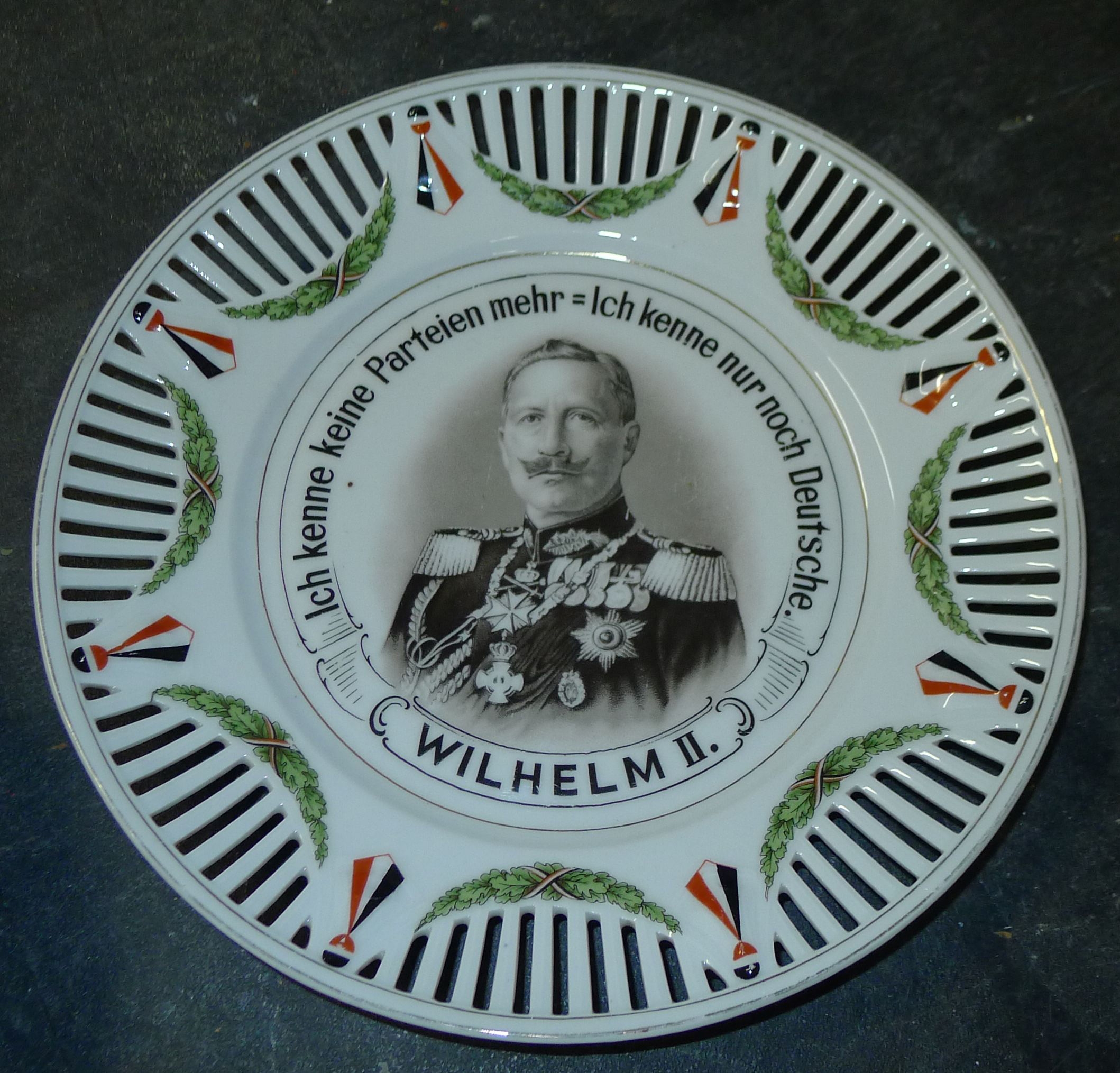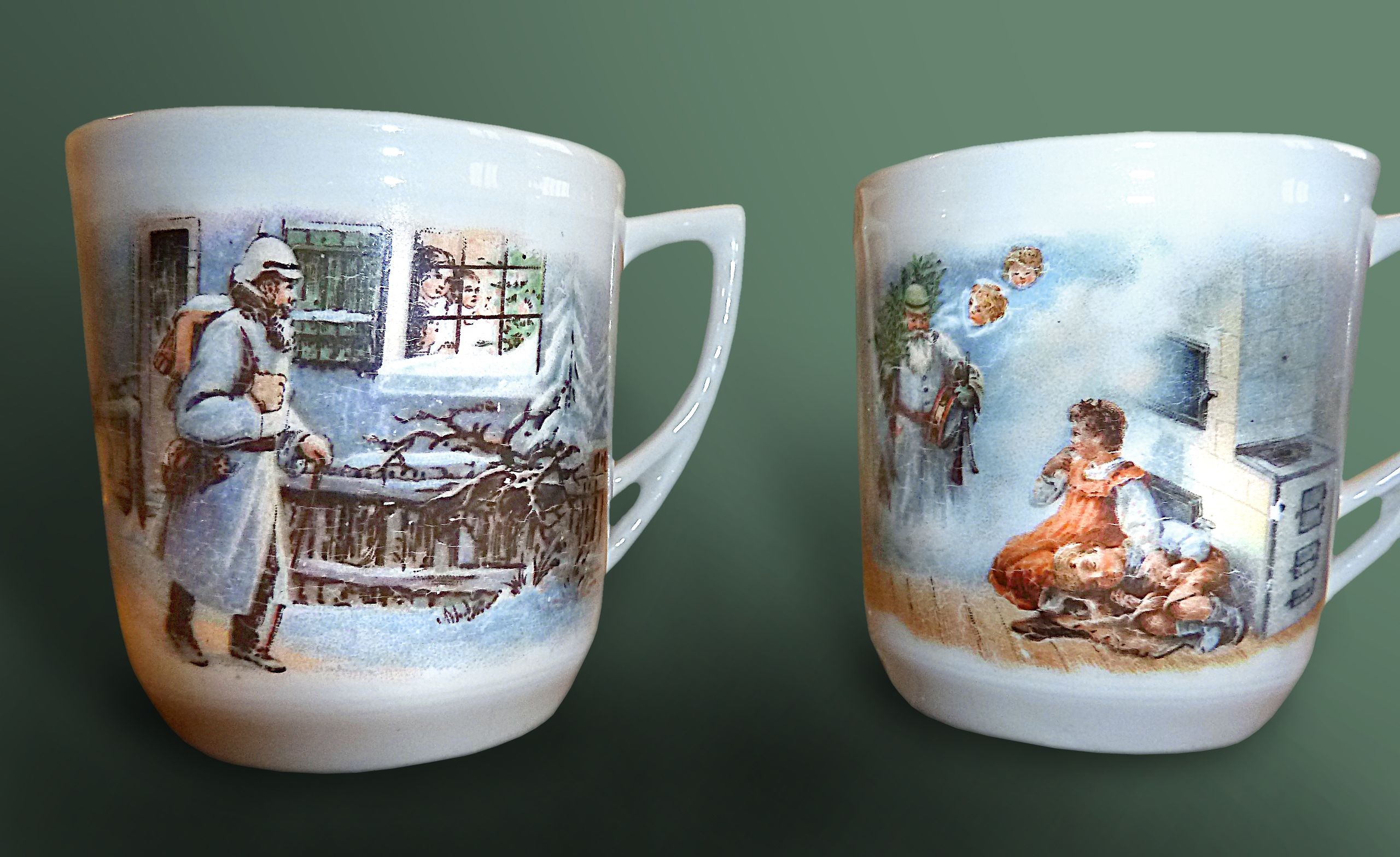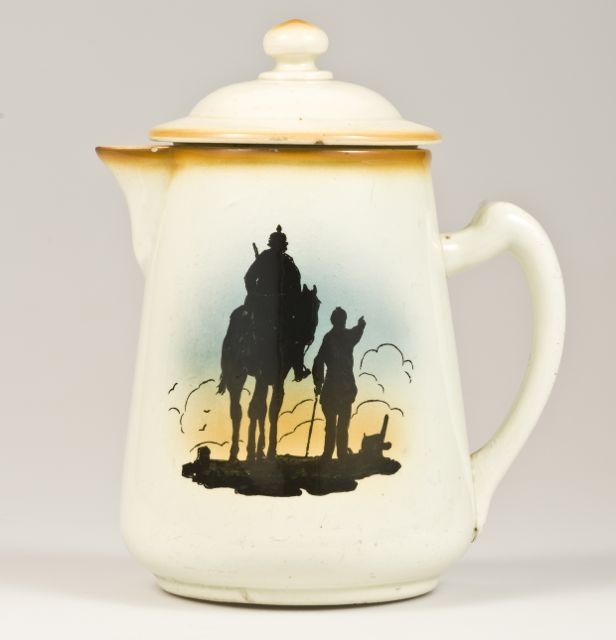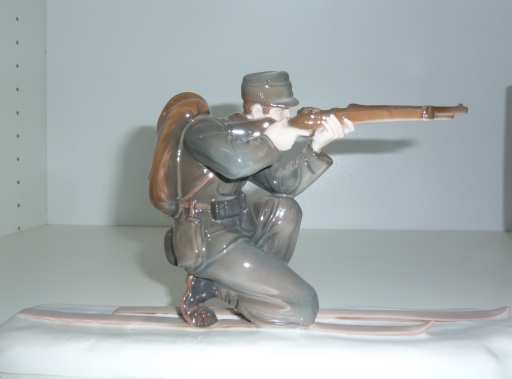A ceramics museum in Germany is holding an exhibition of porcelain, produced to boost morale on the home front during the First World War. CN writer, Katherine Quinlan-Flatter, was given a tour of the Keramikmuseum in Staufen, near Freiburg.
This special exhibition,’Propaganda Ceramics in the First World War,’ originally opened for five months last year but due to its success and popularity, it has now been re-opened and extended until mid-June 2015.
On display in Staufen, south of Freiburg in Germany’s Upper Black Forest, it is the Keramikmuseum’s contribution to ‘First World War in the Upper Rhine Region.’ This is an international project comprising more than 30 exhibitions from three countries – France, Germany and Switzerland.
Curator Elizabeth Haug told me that her original concept had been an exhibition of World War I photography. However, deciding on a display of ceramics, Haug quickly realised that war porcelain had been a mass phenomenon in much the same way as war postcards and posters had been. But porcelain was a more subtle type of propaganda – kept in the parlour and even in the nursery.
Haug explained that although she was able to acquire exhibits on loan from the Landesmusem Karlsruhe and the Zell am Harmersbach pottery factories early on, her research yielded an ever increasing number of items.
“The porcelain is everywhere,” Haug says, and indeed war porcelain can even be acquired on ebay. Thus she was able to purchase various objects in addition to the loaned exhibits. The exhibition also includes items by the great porcelain manufacturers Meissen, Rosenthal and KPM Berlin, as well as pieces from the Majolica in Karlsruhe.
 Wilhelm II plate, unknown manufacturer, 1914, bearing the Kaiser’s famous quote on the outbreak of war: “I no longer recognise parties, I only recognise Germans” (© Badisches Landesmuseum Karlsruhe)
Wilhelm II plate, unknown manufacturer, 1914, bearing the Kaiser’s famous quote on the outbreak of war: “I no longer recognise parties, I only recognise Germans” (© Badisches Landesmuseum Karlsruhe)
Whether the substantial increase in nationalistic porcelain manufacture in 1914 was purely an expression of patriotic fervour or simply good business acumen, designed to compensate for the restricted export market is a matter of speculation in Haug’s opinion. Both were probably true. The topic of war was ubiquitous; the need to promote the concept of a Germany united in itself as well as united against the enemy essential to national morale.
The manufacture of war porcelain thus began only a few days after mobilisation, and articles were originally produced as “souvenirs”.
Wall plates, items of crockery and figurines were decorated with the symbols on the flags of the veterans’ associations – those veterans of the 1870/71 Franco-Prussian war – specifically and most frequently the iron cross, oak (standing for strength, fidelity and German unity) and laurels (for victory and honour).
Haug has identified six “iconographic themes”, as she has called them, in World War I porcelain. The individual rooms of the exhibition are arranged to each contain one of these themes.
The “souvenirs” described above fall into the first category, Symbols, and in addition to the iron cross, oak and laurels also included the Prussian eagle as well as flags and ribbons in the German colours of black, red and white. The iron cross was frequently portrayed with a W in the centre, for Kaiser Wilhelm II. All of these symbols stood for national unity and strength.
Patriotic
The second theme is Patriotic Slogans, printed around the borders of plates or on the side of jugs and cups. Many of these echoed popular songs such as “Gloria Victoria, mit Herz und Hand fürs Vaterland” (Gloria Victoria, with heart and hand for the Fatherland) on the large Majolica plate, and “Die Wacht am Rhein” (the watch on the Rhine), a German patriotic anthem popular in the Franco-Prussian war.
Texts from the veterans’ associations or by politicians were also used, such as “Zum Kampfe entschlossen, zum Frieden bereit” (resolute for battle, prepared for peace) – a famous quote by Reichskanzler (Chancellor) Bethmann-Hollweg.
Haug defines Personality Cult as the third theme, and the pieces that fall into this category are decorated with portraits of Wilhelm II, Hindenburg, military figures and the royalty of Germany’s allies. Some pieces combine these with patriotic slogans.
An additional sub-category which has come to be known as “Hurrah-Kitsch” was popular from 1914 to mid-1915. It was acknowledged that this type of object was not in particularly good taste and from 1915 was therefore no longer sold as a “souvenir” but, when produced, for the benefit of charities set up for wounded and disabled soldiers. The pieces include a porcelain vase in the shape of a shell decorated with Hindenburg’s face.
At Christmas 1914/1915, both Rosenthal and Meissen introduced Christmas plates, and series of entire crockery sets were produced for children. Haug names this fourth theme War Christmas, and goes on to point out how the Father Christmas with the sack of presents is portrayed as a mixture of a soldier and Saint Nicholas.

Children’s cups from the “Christmas service“, 1914, porcelain factory Carl Tielsch (© Porzellanikon – Staatliches Museum für Porzellan Hohenberg a. d. Eger/Selb )
Another set of cups shows a mother and child looking out of the window into the Christmas night, while a soldier marching past looks in, neither seeing each other. “The pictures depict the painful separation of the family at Christmas time”, Haug explains. This was of course particularly poignant in 1914, when Germany had expected to be victorious and home by Christmas.
By targeting children in their production of war porcelain, manufacturers normalised the theme of war and made it acceptable, leading us into a fifth theme which Elizabeth Haug calls the Home Front.
The war had started to show its true colours. Towns near the Front had to set up military hospitals and the wounded were brought en masse. 1915 saw the start of rationing and by 1916 people were battling against famine for their very existence.
Some plates, jugs and mugs in this category were thus dedicated to nurses and military hospitals, but with gallows humour, others depicted detailed ration cards with prices and quantities of the food they could be used to purchase, as well as “K” bread – a cheap type of bread made with potato flour.
 Dragoon on a Reconnaissance Ride, by Georg Schmider, Zeller Ceramic Factories. This coffee pot from 1915 shows the reality of war, with a wounded soldier assisting a comrade (© Badisches Landesmuseum Karlsruhe)
Dragoon on a Reconnaissance Ride, by Georg Schmider, Zeller Ceramic Factories. This coffee pot from 1915 shows the reality of war, with a wounded soldier assisting a comrade (© Badisches Landesmuseum Karlsruhe)
A different wind was blowing in 1915, and this can be seen from two sets of crockery in the War Christmas category. While the 1914 service shows the sentimental images of the family separated at Christmas, the 1915 set depicts the reality of war in no mean terms – death and weapons, unpleasant motives indeed for domestic tableware.
Thus between 1915 and 1916, the production of war porcelain was substantially reduced, and the profits from what was still being manufactured and sold were donated mainly to the charities for the wounded and disabled.
Haug’s sixth and final theme is the War Front, which stylises and idealises the concept of war. Much of this porcelain was produced early on, and the exhibition includes large Majolica figures of soldiers on horseback, in a more old-fashioned depiction of battle reaching back possibly to the Franco-Prussian war. Plates show successful battles and soldiers next to artillery, while Rosenthal produced an entire series of different types of weapon.
The exhibition also contains photos by a war photographer of the time, as well as historical information and letters from the Front.
Finally, a small section of French propaganda porcelain has been included. Mysteriously, a 1916 plate depicting a French soldier from Saargemünd, Lorraine was found, although at this time Lorraine (Lothringen) belonged to Germany. Haug subsequently discovered that the plate had actually been produced between 1920 and 1921.
“The ceramic souvenirs were more than just an instrument of propaganda”, Haug concludes.
“The porcelain objects, symbols of proud self-expression, the defence of the home front and the trivialisation of war, even the hero’s death – all serve to calm the nerves and to bring the soldiers in the field closer to home. As a psychological bridge between the Front and the homeland, they were thus a medium of comfort in fearful times”.
‘Propaganda Ceramics in the First World War’ can be seen at the Keramikmuseum Staufen until June 14th 2015.
© Centenary Digital Ltd & Author
